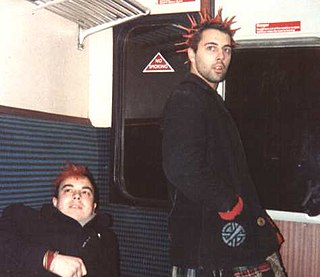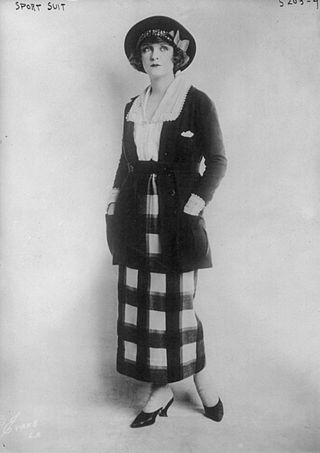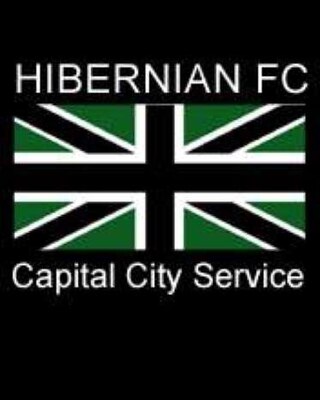
Punk fashion is the clothing, hairstyles, cosmetics, jewellery, and body modifications of the punk counterculture. Punk fashion varies widely, ranging from Vivienne Westwood designs to styles modeled on bands like The Exploited to the dressed-down look of North American hardcore. The distinct social dress of other subcultures and art movements, including glam rock, skinheads, greasers, and mods have influenced punk fashion. Punk fashion has likewise influenced the styles of these groups, as well as those of popular culture. Many punks use clothing as a way of making a statement.

A subculture is a group of people within a cultural society that differentiates itself from the conservative and standard values to which it belongs, often maintaining some of its founding principles. Subcultures develop their own norms and values regarding cultural, political, and sexual matters. Subcultures are part of society while keeping their specific characteristics intact. Examples of subcultures include BDSM, hippies, hipsters, goths, steampunks, bikers, punks, skinheads, gopnik, hip-hoppers, metalheads, cosplayers, otaku, otherkin, furries, and more. The concept of subcultures was developed in sociology and cultural studies. Subcultures differ from countercultures.

Preppy is an American subculture associated with the alumni of college-preparatory schools in the Northeastern United States. The term, which is an abbreviation of "preparatory", is used to denote a person seen as characteristic of a student or alumnus of these schools. Characteristics of preppy individuals include a particular subcultural speech, vocabulary, dress, mannerisms and etiquette reflective of an upper class and old money upbringing.
"Chav", also "charver", "scally" and "roadman" in parts of England, is a British term, usually used in a pejorative way. The term is used to describe an anti-social lower-class youth dressed in sportswear. The use of the word has been described as a form of "social racism". "Chavette" is a related term referring to female chavs, and the adjectives "chavvy", "chavvish", and "chavtastic" are used to describe things associated with chavs, such as fashion, slang, etc. In other countries like Ireland, "Skanger" is used in a similar manner. In Canada, in the province of British Columbia they're known as "Surrey jacks". In Ontario, the term is "hoodman", an equivalent of the term "roadman" used in England. In Newfoundland, "skeet" is used in a similar way, while in Australia, "eshay" or "adlay" is used.

Stone Island is an Italian luxury fashion house specialized in men's apparel, outerwear, and accessories headquartered in Ravarino, Emilia-Romagna, Italy. Its core branding includes a Nautical star and compass, both of which is printed or overlayed atop a button-on cloth badge with green, yellow, and black detailing.

Fashion in the 1990s was defined by a return to minimalist fashion, in contrast to the more elaborate and flashy trends of the 1980s. One notable shift was the mainstream adoption of tattoos, body piercings aside from ear piercing and, to a much lesser extent, other forms of body modification such as branding.

Fashion of the 1980s was characterized by a rejection of 1970s fashion. Punk fashion began as a reaction against both the hippie movement of the past decades and the materialist values of the current decade. The first half of the decade was relatively tame in comparison to the second half, which was when apparel became very bright and vivid in appearance.

The fashion of the 2000's is often described as a global mash up, where trends saw the fusion of vintage styles, global and ethnic clothing, as well as the fashions of numerous music-based subcultures. Hip-hop fashion generally was the most popular among young people of all sexes, followed by the retro inspired indie look later in the decade.

Fashion of the 1960s featured a number of diverse trends, as part of a decade that broke many fashion traditions, adopted new cultures, and launched a new age of social movements. Around the middle of the decade, fashions arising from small pockets of young people in a few urban centers received large amounts of media publicity, and began to heavily influence both the haute couture of elite designers and the mass-market manufacturers. Examples include the mini skirt, culottes, go-go boots, and more experimental fashions, less often seen on the street, such as curved PVC dresses and other PVC clothes.

Fashion in the years following World War II is characterized by the resurgence of haute couture after the austerity of the war years. Square shoulders and short skirts were replaced by the soft femininity of Christian Dior's "New Look" silhouette, with its sweeping longer skirts, fitted waist, and rounded shoulders, which in turn gave way to an unfitted, structural look in the later 1950s.

Workwear is clothing worn for work, especially work that involves manual labour. Often those employed within trade industries elect to be outfitted in workwear because it is built to provide durability and safety.

Ivy League is a style of men's dress, popular during the late 1950s in the Northeastern United States, and said to have originated on college campuses, particularly those of the Ivy League. It was the predecessor to the preppy style of dress.

Street style is fashion that is considered to have emerged not from studios, but from the grassroots. Street fashion is generally associated with youth culture, and is most often seen in major urban centers. Magazines and newspapers commonly feature candid photographs of individuals wearing urban, stylish clothing. Mainstream fashion often appropriates street fashion trends as influences. Most major youth subcultures have had an associated street fashion. Street style is different all around the globe.

Sportswear is an American fashion term originally used to describe separates, but which since the 1930s has come to be applied to day and evening fashions of varying degrees of formality that demonstrate a specific relaxed approach to their design, while remaining appropriate for a wide range of social occasions. The term is not necessarily synonymous with activewear, clothing designed specifically for participants in sporting pursuits. Although sports clothing was available from European haute couture houses and "sporty" garments were increasingly worn as everyday or informal wear, the early American sportswear designers were associated with ready-to-wear manufacturers. While most fashions in America in the early 20th century were directly copied from, or influenced heavily by Paris, American sportswear became a home-grown exception to this rule, and could be described as the American Look. Sportswear was designed to be easy to look after, with accessible fastenings that enabled a modern emancipated woman to dress herself without a maid's assistance.

The Capital City Service (CCS) is a Scottish football hooligan firm associated with Hibernian F.C. and active from 1984 when the casual hooligan subculture took off in Scotland. Their roots were in the previous incarnations of hooligan groups attached to the club and also the wider Edinburgh and surrounding area's gang culture. They are more commonly known in the media and amongst the public as the Hibs Casuals, although within the hooligan network they may also be referred to as Hibs Boys.

Athleisure is a hybrid style of athletic clothing typically worn as everyday wear. The word is a portmanteau combining the words 'athletic' and 'leisure'. Athleisure outfits can include tracksuits, sports jackets, hoodies, yoga pants, tights, sneakers, flats, Birkenstocks, uggs, leggings and shorts that look like athletic wear and pair well with it. Characterized as "fashionable, dressed-up sweats and exercise clothing," the growth of the athleisure trend took root during the mid-2010s, which grew out of the popularity of yoga pants that emerged throughout the mid to late 2000s. The convenience of wearing clothes that matched and paired well with yoga pants gave mainstream North American women the agency to exhibit their casual fashion sensibilities for the sake of convenience in multiple occasions without having to change frequently throughout various settings while going on and about their daily lives. Since the mid-2010s, the pervasiveness of the athleisure phenomenon has experienced a significant surge in popularity across Canada and the United States, particularly within the everyday life and daily routines of mainstream North American women. The atheleisure trend entails casual clothing options that give North American women the option to incorporate athletic clothing as part as of their everyday attire, irrespective of their actual engagement in physical activities or not.

C.P. Company is an Italian apparel brand founded in 1971 by designer Massimo Osti. Initially called Chester Perry by the suggestion of his fashion entrepreneur friend Corrado Zannoni, its name was changed in 1978 following a lawsuit by Chester Barrie and Fred Perry, for the use of their first name and surname.
















